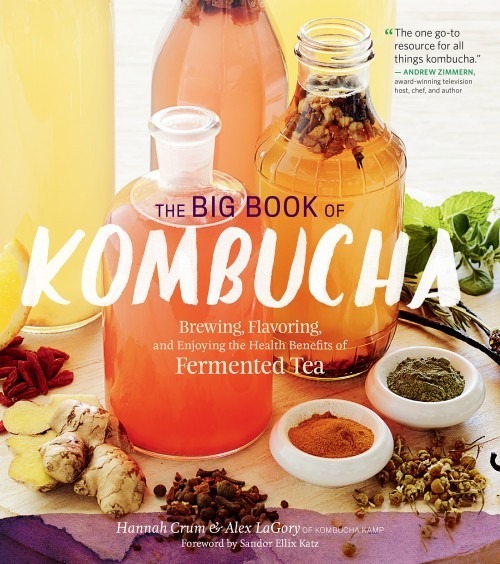
THE BIG BOOK OF KOMBUCHA: Brewing, Flavoring, and Enjoying the Health Benefits of Fermented Tea
Hannah Crum, Alex LaGory
Storey Publishing
March 8, 2016
$24.95 Paperback
ISBN-13: 978-1612124339
Hannah Crum, Alex LaGory
Storey Publishing
March 8, 2016
$24.95 Paperback
ISBN-13: 978-1612124339
 Hannah Crum and her partner, Alex LaGory, are the founders of Kombucha Kamp, a leading mailorder supplier of kombucha supplies. Crum is recognized worldwide as “The Kombucha Mamma,” an industry journalist, a commercial brewing consultant, a featured speaker at health festivals nationwide, and a mentor to thousands of homebrewers around the world. Crum and LaGory live in Los Angeles.
Hannah Crum and her partner, Alex LaGory, are the founders of Kombucha Kamp, a leading mailorder supplier of kombucha supplies. Crum is recognized worldwide as “The Kombucha Mamma,” an industry journalist, a commercial brewing consultant, a featured speaker at health festivals nationwide, and a mentor to thousands of homebrewers around the world. Crum and LaGory live in Los Angeles.
Brewing your own kombucha at home is easy and fun! You can get exactly the flavors you want, and for a fraction of the cost of store-bought. This complete guide, from the proprietors of Kombucha Kamp (kombuchakamp.com), shows you how to do it from start to finish, with illustrated step-by-step instructions and recipes for 286 different flavor combinations. The book also includes information on the many health benefits of kombucha, fascinating details of the drink’s history, and recipes for delicious foods and drinks you can make with kombucha (including some irresistible cocktails!).